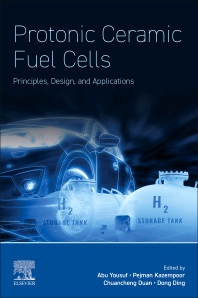Books in Physical sciences and engineering
Books in Physical sciences and engineering
- 1st Edition
- February 1, 2026
- Abu Yousuf + 3 more
- English

Protonic Ceramic Fuel Cells
- 1st Edition
- February 1, 2026
- Qingling Zhang
- English
- Paperback9 7 8 0 4 4 3 3 0 0 2 4 0
- eBook9 7 8 0 4 4 3 3 0 0 2 5 7

Remote Sensing at Night
- 1st Edition
- February 1, 2026
- Chao Zhang + 1 more
- English

Multi-scale Mechanics of 2D Triaxially Braided Composites
- 1st Edition
- February 1, 2026
- Francesco Baino + 1 more
- English

Porous Bioceramics for Biomedical Applications
- 1st Edition
- February 1, 2026
- Sabu Thomas + 3 more
- English

Advanced Functional Materials for Membrane-Assisted Water Purification
- 1st Edition
- February 1, 2026
- Salman Ahmad + 3 more
- English
- Paperback9 7 8 0 4 4 3 3 1 5 9 4 7
- eBook9 7 8 0 4 4 3 3 1 5 9 5 4

Multiphase Power Electronic Converters
- 2nd Edition
- February 1, 2026
- Ennio Macchi + 1 more
- English

Organic Rankine Cycle (ORC) Power Systems
- 1st Edition
- February 1, 2026
- Léonard Dobrzyński + 6 more
- English

Sensing
- 1st Edition
- February 1, 2026
- Ricardo Amils
- English

Geomicrobiology of Río Tinto
- 1st Edition
- February 1, 2026
- Manasa Mohan + 2 more
- English
